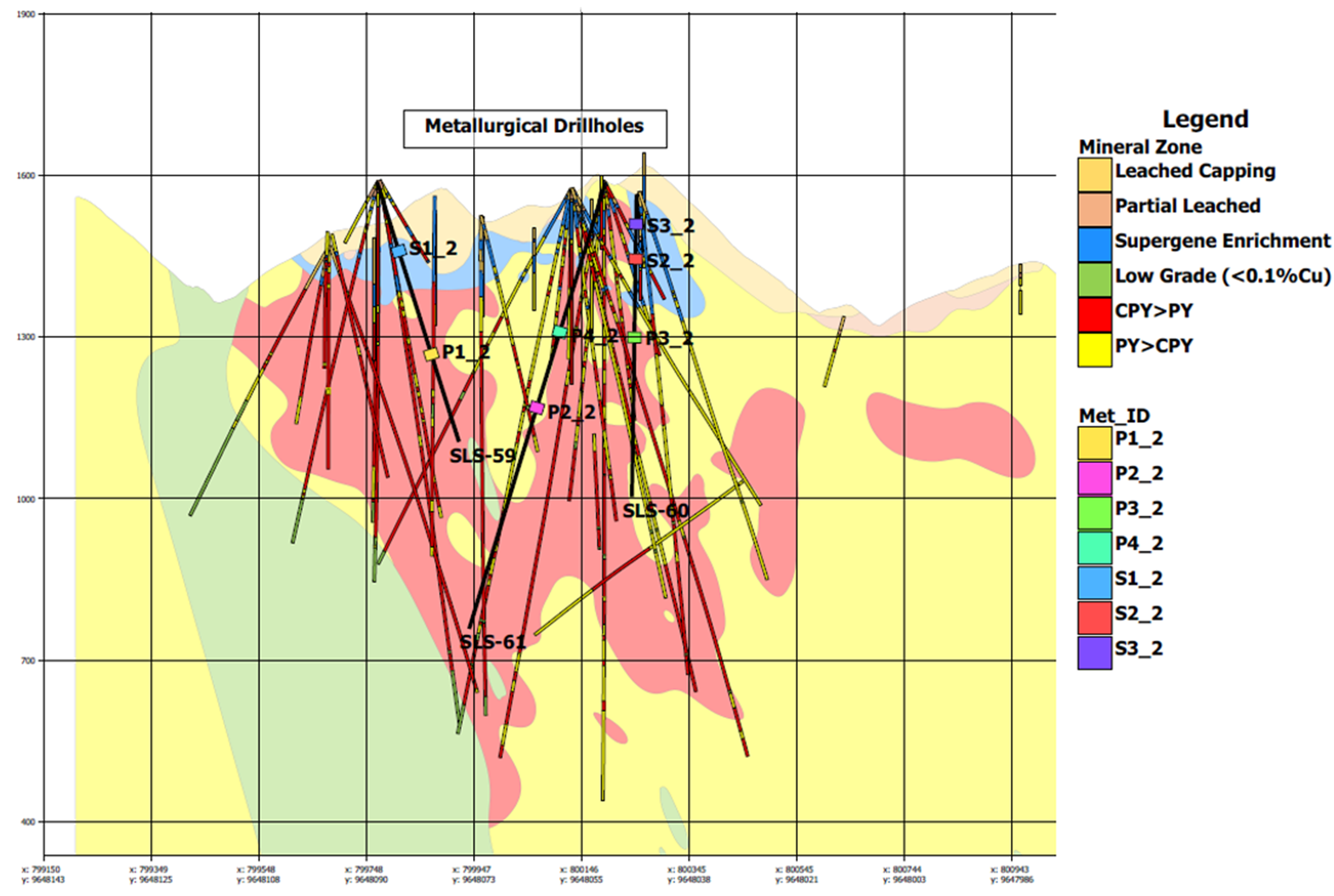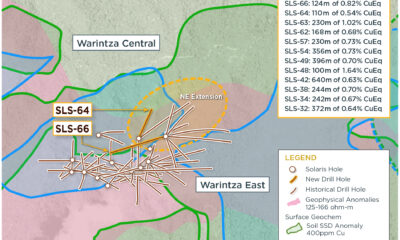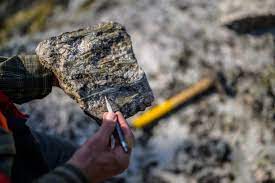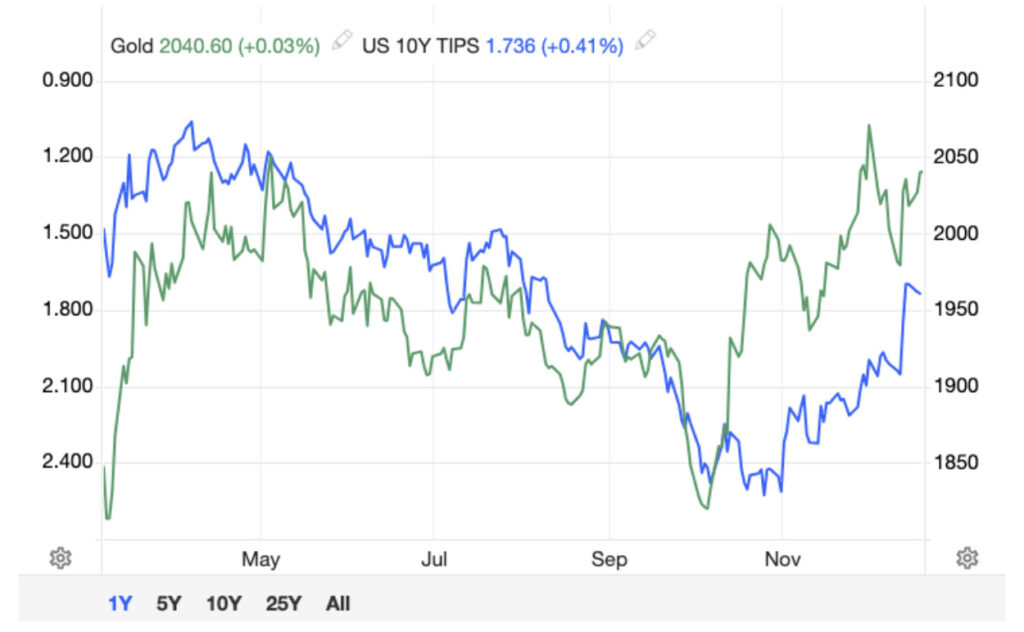Companies
Solaris Reports High Recoveries of Over 90% Copper and 80% Molybdenum from Warintza Project Metallurgical Test Work
VANCOUVER, British Columbia, Jan. 23, 2023 (GLOBE NEWSWIRE) — Solaris Resources Inc. (TSX: SLS; OTCQB: SLSSF) (“Solaris” or “the Company”) is…

VANCOUVER, British Columbia, Jan. 23, 2023 (GLOBE NEWSWIRE) — Solaris Resources Inc. (TSX: SLS; OTCQB: SLSSF) (“Solaris” or “the Company”) is pleased to report results from metallurgical test work on its Warintza Project (“Warintza” or “the Project”) in southeastern Ecuador. The Company commissioned FLSmidth USA Inc. (“FLS”) to complete comminution and metallurgical flotation test work programs. Highlights are listed below and detailed results in Tables 1-4.
Mr. Daniel Earle, President & CEO, commented: “Warintza is blessed with simple metallurgy that readily returns high recoveries of critical minerals from standard flotation processes into high-grade concentrates free of deleterious elements. Historical testing reported high recoveries of over 90% for copper and 70% for gold; our testing has reproduced these results and established high recoveries for molybdenum of over 80% at a time when molybdenum prices recently eclipsed $30/lb due to structural supply issues in the sector.”
Highlights
- High recoveries for copper (“Cu”), molybdenum (“Mo”) and gold (“Au”) in rougher flotation, cleaner flotation and locked cycle testing
- Low reagent dosages and short flotation times over a wide range of pH levels, and requiring only moderate to coarse grind sizes for both supergene and hypogene samples
- High copper concentrate grades expected from both supergene material at 40% Cu and hypogene material at 22% Cu with both concentrates containing in excess of 1 g/t Au
- High molybdenum concentrate grades expected to meet or exceed 51% Mo independent of feed type given excellent liberation of coarse grained molybdenite
- For context, the Warintza Mineral Resource Estimate (“MRE”)¹ includes a molybdenum byproduct estimate containing 150 kt Mo grading 0.03% Mo (Indicated) and 130 kt Mo grading 0.01% Mo (Inferred), in addition to gold
- Concentrates free of deleterious elements, with no significant values of arsenic, antimony, bismuth or mercury
- Optimization testing with larger sample sizes planned for hypogene material aimed at further increasing recoveries
Metallurgical Test Work Program Scope
The metallurgical test work program at FLS included comminution grind studies on two master composites, ore characterization, grinding indices, rougher and cleaner flotation tests, locked cycle testing and variability rougher kinetics flotation tests. The objective of the test work was to evaluate the metallurgical flotation response of the master composites and variability samples, establish metal recoveries, evaluate if any deleterious elements were present, and assess whether clean, high-grade concentrates could be produced with industry standard processing practices and reagents.
Sample Selection
The metallurgical samples were taken from three drill holes specifically drilled for metallurgical test work. The hole depths range from 500m to 960m with sample selection ranging from 46m below surface to a depth of 450m. Seven samples which consisted of 20m intervals of half core were selected for the test work program for a total weight of 651kg of sample material. The samples were selected from the Warintza Central deposit to represent the mineralization, metal grades, and lithology type which formed the first pit phases of the MRE.
Table 1: Sample Selection
| Met ID | Hole ID | From (m) | To (m) | Interval (m) | Mineralization |
| S1_2 | SLS-59 | 126 | 146 | 20 | Supergene |
| S2_2 | SLS-60 | 112 | 132 | 20 | Supergene |
| S3_2 | SLS-60 | 46 | 66 | 20 | Supergene |
| P1_2 | SLS-59 | 330 | 350 | 20 | Hypogene |
| P2_2 | SLS-61 | 428 | 448 | 20 | Hypogene |
| P3_2 | SLS-60 | 260 | 280 | 20 | Hypogene |
| P4_2 | SLS-61 | 280 | 300 | 20 | Hypogene |
| Total | 140 |
Table 2: Collar Location
| Hole ID | Easting | Northing | Elevation (m) | Depth (m) | Azimuth (degrees) | Dip (degrees) |
| SLS-61 | 800191 | 9648065 | 1573 | 967 | 255 | -72 |
| SLS-60 | 800258 | 9648097 | 1559 | 873 | 190 | -80 |
| SLS-59 | 799765 | 9648033 | 1571 | 513 | 65 | -70 |
| Notes to Table 2: The coordinates are in WGS84 17S Datum. | ||||||
Figure 1: Metallurgical Drill holes

A photo accompanying this announcement is available at https://www.globenewswire.com/NewsRoom/AttachmentNg/b057e6b9-916f-4276-9f06-a77bcad66615
The metallurgical samples were combined by mineralization type and classified as supergene and hypogene which formed two master composites (“MC”) for the flotation test work program. MC #1 represents the supergene material and MC #2 represents the hypogene material. Each MC was assayed to confirm the metal grades are within range of the grades expected in the first phases of a potential mine plan. The head grades for each MC can be found in Table 3.
Table 3: Master Composite Head Grade
| Composite | Head Grade | ||
| Cu, % | Mo, % | Au, g/t | |
| Supergene | |||
| MC #1 | 1.22 | 0.03 | 0.07 |
| MC #1B | 1.13 | 0.04 | 0.07 |
| Hypogene | |||
| MC #2 | 0.66 | 0.03 | 0.06 |
| MC#2B | 0.58 | 0.03 | 0.07 |
Rougher Flotation Testing
FLS completed six rougher flotation tests on MC #1 and five rougher flotation tests on MC #2. In both composites, the copper recovery does not appear to be influenced significantly by pH, grind size, or collector dosages. The rougher flotation tests focused on primary grind size, pH, and collector dosage as the variables for influencing the flotation behavior. The collector used in all tests is Cytec Aero 8989 for copper and burner oil as a molybdenum collector. Below is a summary of MC #1 and #2 tests at various grind sizes and pH.
Table 4: Rougher Recoveries and Grades
| MC #1 – Supergene | |||||||
| Actual Grind Size, µm | pH | Recovery | Grade | ||||
| Cu, % | Mo, % | Au, % | Cu, % | Mo, % | Au, g/t | ||
| 117 | 6.8 | 91.7 | 89.3 | 80.3 | 9.63 | 0.24 | 0.38 |
| 122 | 8.5 | 91.7 | 88.6 | 78.2 | 7.74 | 0.19 | 0.43 |
| 143 | 8.5 | 91.0 | 90.7 | 77.3 | 12.32 | 0.31 | 0.65 |
| 144 | 9.8 | 91.0 | 92.3 | 68.2 | 13.41 | 0.32 | 0.85 |
| 144 | 9.2 | 91.9 | 91.5 | 71.7 | 12.95 | 0.30 | 0.92 |
| 167 | 8.8 | 91.1 | 86.6 | 74.0 | 12.53 | 0.30 | 0.62 |
| Average | 91.4 | 89.8 | 75.0 | ||||
| MC #2 – Hypogene | |||||||
| Actual Grind Size, µm | pH | Recovery | Grade | ||||
| Cu, % | Mo, % | Au, % | Cu, % | Mo, % | Au, g/t | ||
| 98 | 8.5 | 95.0 | 94.4 | 78.0 | 4.39 | 0.20 | 0.38 |
| 129 | 8.6 | 95.1 | 91.6 | 78.8 | 4.37 | 0.20 | 0.39 |
| 177 | 8.6 | 94.5 | 93.9 | 78.7 | 4.32 | 0.18 | 0.39 |
| 147 | 9.4 | 95.5 | 91.4 | 70.0 | 4.44 | 0.15 | 0.45 |
| 147 | 8.9 | 94.8 | 91.6 | 68.8 | 4.78 | 0.18 | 0.47 |
| Average | 95.0 | 92.6 | 74.8 | ||||
Cleaner and Locked Cycle Flotation Testing
Batch cleaner tests were conducted to ensure that bulk concentrates could be produced without significant cleaner losses. One cleaner test was conducted on MC #1 and four cleaner tests were conducted on MC #2, with regrind size being the most significant variable tested. A second set of master composites were created with the same blend of variability samples as the original master composites labeled MC #1B and MC #2B and were used for seven locked cycle tests and copper-molybdenum separation tests. Batch cleaner and locked cycle testing produces high recoveries for the supergene composite of 90% Cu and 83% Mo and hypogene composite of 89% Cu and 75% Mo. FLS concluded that higher recoveries could be achieved for MC #2 and #2B with reagent optimization, which will be incorporated into the next phase of testing.
Copper-Molybdenum Concentrate Separation Test
The second set of master composites, MC #1B and MC #2B, were used for the copper-molybdenum separation of the bulk concentrates. The test work only included a rougher stage molybdenum float that was carried out for both MC #1B and MC #2B due to the size of the remaining sample. The molybdenum separated from the copper successfully into a rougher concentrate for both master composites given excellent liberation characteristics and coarse grain size for molybdenum, with the majority of grains by mass > 200 microns in size. Flotation testing of the supergene samples produced a copper concentrate grading approximately 40% Cu and containing in excess of 1 g/t Au. Flotation testing of the hypogene samples produced a copper concentrate grading approximately 22% Cu and containing in excess of 1 g/t Au. Molybdenum concentrate grades at 51% Mo independent of feed type.
Endnotes
- Refer to Solaris’ technical report titled, “NI 43-101 Technical Report for the Warintza Project, Ecuador” with an effective date of April 1, 2022, prepared by Mario E. Rossi and filed on the Company’s SEDAR profile at www.sedar.com.
Quality Control & Quality Assurance
Sample assay results have been independently monitored through a quality control/quality assurance (“QA/QC”) program that includes the insertion of blind certified reference materials (standards), blanks and field duplicate samples. Solaris employs a QA/QC program consistent with National Instrument 43-101 Standards of Disclosure for Mineral Projects (“NI 43-101”) and industry best practices. Logging and sampling were completed at a secured Company facility located in Quito, Ecuador. Drill core is cut in half on site and samples are securely transported to ALS Labs in Quito. Sample pulps are sent to ALS Labs in Lima, Peru and Vancouver, Canada for analysis. Total copper and molybdenum contents are determined by four-acid digestion with AAS finish. Gold is determined by fire assay of a 30-gram charge. In addition, selected pulp check samples are sent to Bureau Veritas lab in Lima, Peru. Both ALS Labs and Bureau Veritas lab are independent of Solaris. The drillhole data has been verified by Jorge Fierro, M.Sc., DIC, PG, using data validation and quality assurance procedures under high industry standards. For the metallurgical test work at FLS, the ALS labs assay results were used by FLS to produce seven sample composites from the remaining sawn half core to best represent a range of locations within the Warintza Central deposit. The remaining half core was sampled by Solaris staff, bagged and sent to FLS at FLS’ laboratory in Salt Lake City, Utah. The metallurgical test work described in this release was performed by FLS. All sample preparation, solution and solid assaying and metallurgical studies were performed utilizing accepted industry standard procedures. FLS conforms to the requirements of ISO/IEC 17025 and is accredited by the Standards Council of Canada for the specific tests undertaken. FLS is independent of Solaris. Solaris is not aware of any drilling, sampling, recovery or other factors that could materially affect the accuracy or reliability of the data referred to herein.
Qualified Person
The scientific and technical information in this news release has been reviewed and approved by Jorge Fierro, M.Sc., DIC, PG, Vice President Exploration of Solaris who is a “Qualified Person” as defined in NI 43-101. Jorge Fierro is a Registered Professional Geologist through the SME (registered member #4279075).
On behalf of the Board of Solaris Resources Inc.
“Daniel Earle”
President & CEO, Director
For Further Information
Jacqueline Wagenaar, VP Investor Relations
Direct: 416-366-5678 Ext. 203
Email: [email protected]
About Solaris Resources Inc.
Solaris is a multi-asset exploration company, advancing a portfolio of copper and gold assets in the Americas, which includes: its primary focus, a world class large-scale resource with expansion and discovery potential at the Warintza Project in Ecuador; discovery potential at its Ricardo Project and optioned and owned grass-roots Tamarugo Project in Chile; discovery potential at its Capricho and Paco Orco projects in Peru; and significant leverage to increasing copper prices through its 60% interest in the La Verde joint-venture project with a subsidiary of Teck Resources in Mexico.
Cautionary Notes and Forward-looking Statements
This document contains certain forward-looking information and forward-looking statements within the meaning of applicable securities legislation (collectively “forward-looking statements”). The use of the words “will” and “expected” and similar expressions are intended to identify forward-looking statements. These statements include statements that high copper concentrate grades are expected from both supergene material at 40% Cu and hypogene material at 22% Cu with both concentrates containing in excess of 1 g/t Au, high molybdenum concentrate grades are expected to meet or exceed 51% Mo independent of feed type given excellent liberation of coarse grained molybdenite, optimization testing with larger sample sizes is planned for hypogene material aimed at further increasing recoveries, and that FLS concluded that higher recoveries could be achieved for batch cleaner and locked cycle testing for MC #2 and #2B with reagent optimization, which will be incorporated into the next phase of testing. Although Solaris believes that the expectations reflected in such forward-looking statements and/or information are reasonable, readers are cautioned that actual results may vary from the forward-looking statements. These statements are based on a variety of assumptions including assumptions made about the Company’s ability to advance exploration efforts at the Warintza Project; the results of such exploration efforts; and the Company’s ability to achieve its growth objectives. These statements also involve known and unknown risks, uncertainties and other factors that may cause actual results or events to differ materially from those anticipated in such forward-looking statements, including the risks, uncertainties and other factors identified in the Solaris Management’s Discussion and Analysis for the year ended December 31, 2021 available at www.sedar.com. Furthermore, the forward-looking statements contained in this news release are made as at the date of this news release and Solaris does not undertake any obligation to publicly update or revise any of these forward-looking statements except as may be required by applicable securities laws.
drilling
tsx-sls
solaris-resources-inc
solaris resources inc
press-release

Dolly Varden consolidates Big Bulk copper-gold porphyry by acquiring southern-portion claims – Richard Mills
2023.12.22
Dolly Varden Silver’s (TSXV:DV, OTCQX:DOLLF) stock price shot up 16 cents for a gain of 20% Thursday, after announcing a consolidation of…
GoldTalks: Going big on ASX-listed gold stocks
Aussie investors are spoiled for choice when it comes to listed goldies, says Kyle Rodda. Here are 3 blue chips … Read More
The post GoldTalks: Going…
Gold Digger: ‘Assured growth’ – central bank buying spree set to drive gold higher in 2024
Central banks will drive the price of gold higher in 2024, believe various analysts Spot gold prices seem stable to … Read More
The post Gold Digger:…



















